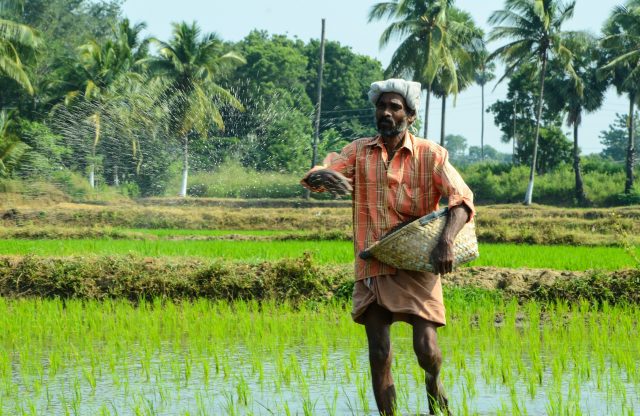Colombo: the ‘rice monopoly’ a danger for farmers and consumers
The government has so far taken no action on production. Relief is needed to calm prices and meet the needs of households, who spend on average almost 374 on food. Internal capacity must be increased to meet needs. Today there is a monopoly in the hands of a few private mill owners, linked to prominent politicians.
Colombo (AsiaNews) - In Sri Lanka the threat of a ‘rice monopoly’ is becoming more and more concrete, a danger for farmers and consumers while the government seems to be snubbing the emergency and has so far taken no measures to control at least 10% of the annual production from the country's fields. Today, most households on the island spend around 75 per cent of their income on buying essential foodstuffs and the per capita consumption of rice is around 125 kg per year.
In 2023, 28,380 tonnes of rice were imported at a cost of 6,091 million rupees (just under 19 million euro). In the past, every government in power has focused on providing workers in the fields with subsidised fertilisers and pesticides, waiving farmers' loans, and guaranteeing better prices for agricultural products, including rice, the staple food of Sri Lankans.
The cost of producing one kilogram of rice, which includes expenses such as machinery, electricity, labour and distribution, is about 25 rupees (just under 8 euro cents). Given the government guaranteed price of 100 rupees per kg (0.31 euro cents), rice can be sold to consumers at 160-175 rupees per kg (about 0.50 euro cents). Currently, however, 1 kg of rice is sold for 220 rupees (0.68 cents). With this in mind, the government should intervene: if relief were granted, rice could be sold to consumers at 150-160 rupees per kg. To date, the Food Department is not functioning, the cooperative societies are defunct and the Paddy Marketing Board has become a slow and inefficient institution. Large-scale mill owners make exorbitant profits during adverse weather conditions, including floods and drought.
According to the former Director of Agriculture, K. B. Gunaratne, ‘since the per capita consumption of rice in Sri Lanka is about 125 kg per year, an additional 200,000 tonnes per month must be produced to reach this target, a total of 2.4 million tonnes per year’. According to the expert's assessment, to increase production in the paddy fields about 1.3 million hectares would have to be cultivated each year during the Yala (May to August) and Maha (September to March) seasons. About 3.53 million tonnes are currently produced, but this would not be enough for the needs. In the past, Sri Lanka was self-sufficient between 2010 and 2013, but has not been self-sufficient since then.
Interviewed by AsiaNews farmers Haramanis Appuhamy (53), W.M. Siriyalatha (42) and Punchi banda Wijepala (38) from Polonnaruwa district in the North Central Province, the ‘rice bowl’ of Sri Lanka, explain: ‘To provide rice at a subsidised price, the government could provide transport facilities for rice distribution and facilitate the establishment of paddy fields in the main producing districts such as Ampara, Batticaloa, Anuradhapura, Polonnaruwa, Kurunegala, Hambantota and Mahaweli B, C, L and M areas.
Economists Dayantha Mendis and Sudesh Mayadunne warn that ‘the so-called “rice monopoly” could be stopped if the government took steps to control at least 10% of the country's annual production. Currently, the monopoly is in the hands of a few private mill owners closely linked to prominent politicians. As a result, rice farmers and consumers feel powerless in the face of this situation'.
According to a recent joint World Food Programme (WFP) survey, the number of food insecure households in Sri Lanka increased from 17% to 24% within six months. The share includes 51% of households in the housing sector, 51% in rural areas and 15% in urban areas. Some households now spend 75% of their income on basic foodstuffs. According to government statistics, a family of four needs 120 thousand rupees per month (about EUR 374) for food.
12/02/2016 15:14
24/10/2019 17:56







.png)










